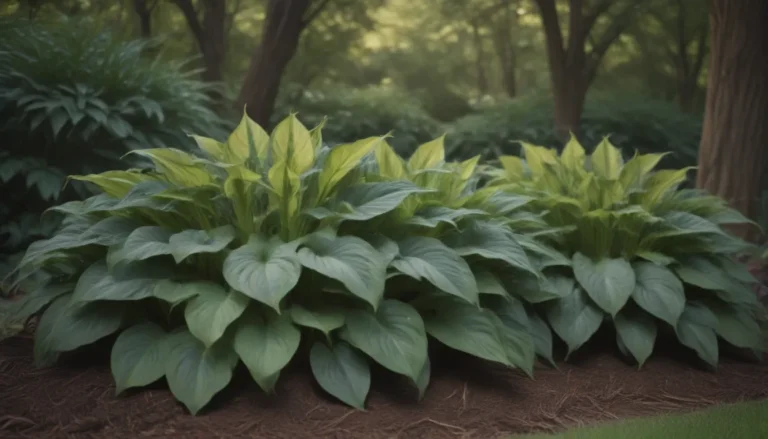The Ultimate Guide to Growing and Caring for Watermelon Peperomia Plants

Watermelon Peperomia, also known as Peperomia argyreia, has become a favorite among plant enthusiasts due to its striking watermelon-patterned leaves. These tropical plants are native to South America and thrive as indoor houseplants. In this comprehensive guide, we will explore everything you need to know about growing and caring for Watermelon Peperomia to ensure they thrive in your home.
Understanding Watermelon Peperomia Care
To successfully care for Watermelon Peperomia, it’s important to understand their specific needs and preferences. These plants are relatively easy to care for, but they do require attention to watering and light conditions. Here are some key factors to consider when caring for your Watermelon Peperomia:
Light
Watermelon Peperomia thrives in bright to medium indirect light, making them perfect for areas near windows. Avoid exposing them to prolonged periods of direct sunlight as this can cause their leaves to burn. While they can survive in low light conditions, their growth may be more leggy, and their leaves may be smaller.
Soil
Use well-draining potting mix for your Watermelon Peperomia, ensuring it can hold some moisture. Avoid using soil meant for dry-loving plants like cacti, as it won’t retain enough water for your peperomia. A mix of peat moss and perlite works well for these plants.
Watering
Allow the top layer of soil to dry out between watering sessions, then water your plant thoroughly. Avoid both overwatering and underwatering, as Watermelon Peperomia are sensitive to fluctuations in soil moisture.
Temperature and Humidity
These tropical plants thrive in warm, slightly humid conditions. Keep your Watermelon Peperomia away from vents or drafty areas that could dry out the air around them. Typical indoor temperatures and humidity levels are suitable for these plants.
Fertilizing
During the growing season, Watermelon Peperomia can benefit from regular fertilization. Use a balanced liquid fertilizer every two to four weeks in the spring and summer to promote healthy growth.
Propagating Watermelon Peperomia
Watermelon Peperomia are easy to propagate and make great “friendship plants” to share with others. You can propagate them through division or leaf cuttings:
Division
When propagating through division, keep in mind that Watermelon Peperomia do not branch at the cut stem like some other plants. Once you cut a leaf off, that stem is sacrificed permanently.
Leaf Cuttings
Use leaf cuttings to propagate Watermelon Peperomia, ensuring you have a healthy leaf with a stem node for optimal success.
Potting and Repotting Tips
Watermelon Peperomia prefer slightly pot-bound conditions, so only repot when necessary. Refresh the soil every two to three years in the spring, choosing a pot size that fits their root ball comfortably.
Dealing with Pests and Diseases
Watermelon Peperomia are prone to common houseplant pests such as fungus gnats, mealybugs, scale, and aphids. Overwatering can also lead to root rot. Monitor your plants regularly and take action promptly if pests or diseases are detected.
Troubleshooting Common Problems
While Watermelon Peperomia are generally low-maintenance, they can experience issues if their care needs are not met. Here are some common problems and solutions:
Curling Leaves
Curling leaves may indicate that your plant is either drying out too much or receiving too much direct sunlight. Adjust your watering and lighting conditions accordingly.
Drooping Leaves
If your plant’s leaves are drooping, it may be thirsty and in need of water. Give it a thorough watering to revive its health.
Leaves Turning Brown
Brown leaves can be a sign of environmental stress, pest damage, lack of humidity, or overwatering. Evaluate your plant’s conditions to identify the root cause.
Leaves Turning Yellow
Yellowing leaves are often a result of overwatering. Ensure proper drainage and allow the soil to dry out between watering sessions. Pests can also cause yellowing leaves, so monitor your plant for signs of infestation.
Creating a healthy environment for your Watermelon Peperomia will result in lush, vibrant foliage. Keep an eye on their light, water, and humidity requirements to ensure they thrive in your home.
In conclusion, Watermelon Peperomia plants are a beautiful addition to any indoor garden. By following these care tips and troubleshooting common problems, you can enjoy the unique foliage and easy-growing nature of these tropical beauties. Transforming your space into a vibrant oasis with Watermelon Peperomia is a rewarding experience for any plant enthusiast. Dive into the world of Watermelon Peperomia care and watch your plants flourish!





